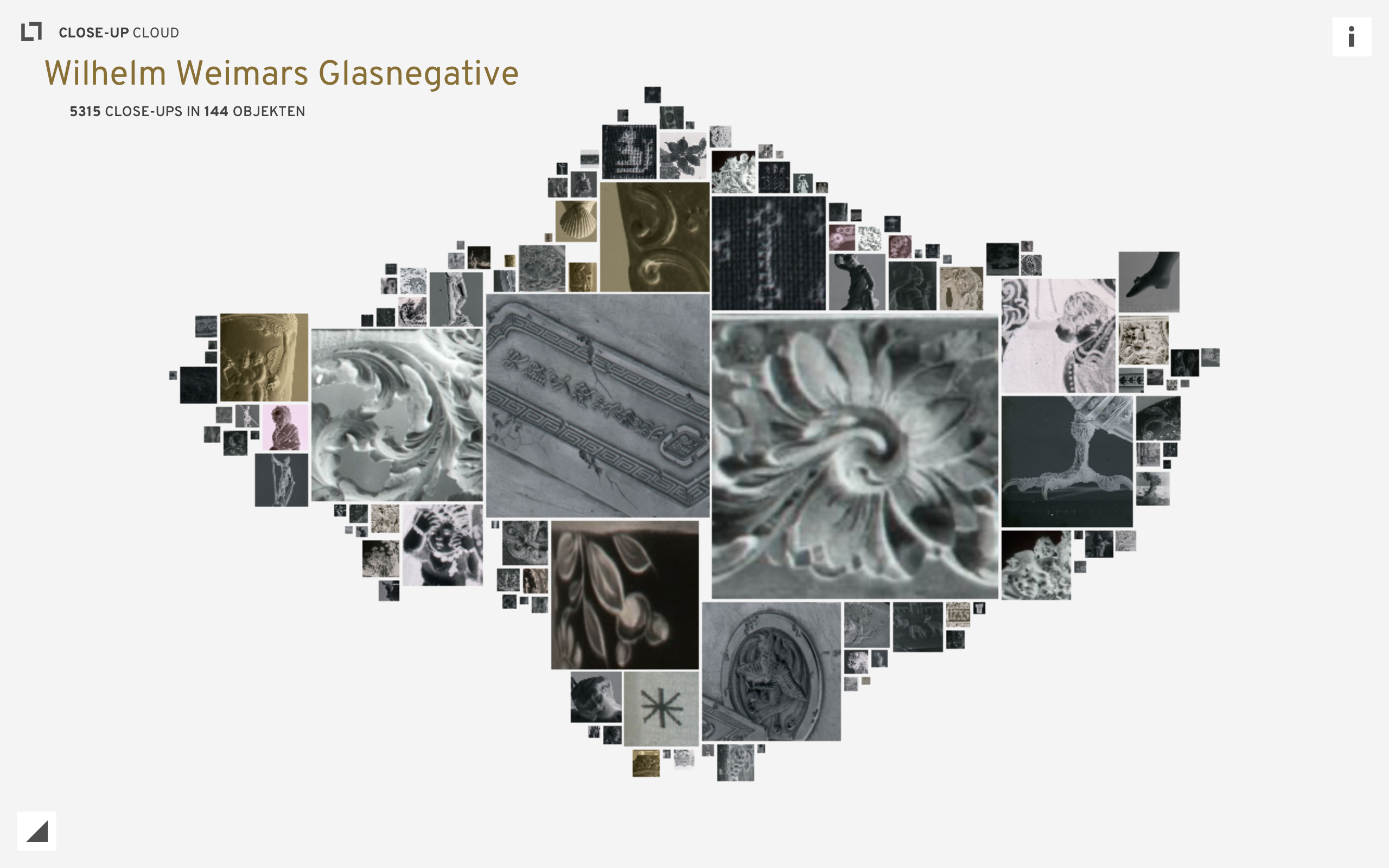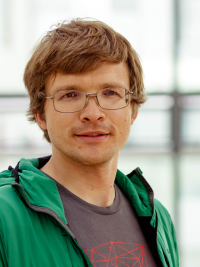Close-Up Cloud: An Experimental Visualisation for Exploring Image Collections
The Close-Up Cloud introduces a visualisation approach that challenges the separation of overview and detail. For this, the iconographic details of images are summarised to reveal visual patterns in a collection and to stimulate exploration through the holdings.

Museum for Art and Crafts Hamburg
The Close-Up Cloud enables the visual exploration of a collection of historical glass negatives. The overview from close-up images invites you to familiarise yourself with the collection and explore its richness of detail. The sizes of the images illustrate the quantitative distribution of iconographic details in the collection. The close-ups become visual navigational elements through which the collection can be explored. The visualisation allows the glass negatives to be experienced in a way that would not be possible with the physical objects. While a light table can also be used to examine a wealth of detail of individual glass negatives and their depth of field. The Close-Up Cloud expands access by providing an overview of all the keywords that have been assigned in the collection and invites interactive exploration.
The collection consists of around 1700 glass negatives by the first photographer and previous draughtsman Wilhelm Weimar (1857 - 1917) at the Museum für Kunst und Gewerbe Hamburg (MKG). On the negative plates measuring up to 18×24 cm, he photographed decorative art objects from the rapidly growing collection over a period of 17 years. The range of motifs in these reproduction photographs spans from massive chests and elegant porcelain to richly detailed samplers. In addition, the negatives provide clues as to how the photographer staged objects according to size and material and what tools he used to do so. A selection of 144 negatives from the collection that has been indexed so far is made accessible in the visualisation via keywords localised/located in the image.
Wilhelm Weimar's glass negatives are part of the Photography and New Media Collection at the MKG. They were catalogued as part of the interdisciplinary research programme PriMus – Promovieren im Museum (cooperation between Leuphana University Lüneburg and six museums in the Hamburg region) from 2017 to 2019 and are published in the MKG Collection Online.
A student research project of the University of Applied Sciences Potsdam in cooperation with the Museum für Kunst und Gewerbe Hamburg funded by the Brandenburg Centre for Media Studies.
Project Management & Team
Scientific management

Prof. Dr. Marian Dörk
Project team
- Pauline Junginger: conception, theory work, documentation
- Dennis Ostendorf: conception, design, development
- Anastasia Voloshina: conception, design, video
- Barbara Avila Vissirini: conception, design, development
- Timo Hausmann: Software development web
- Christopher Pietsch: software development exhibition
- Sarah Kreiseler: Art scientific support